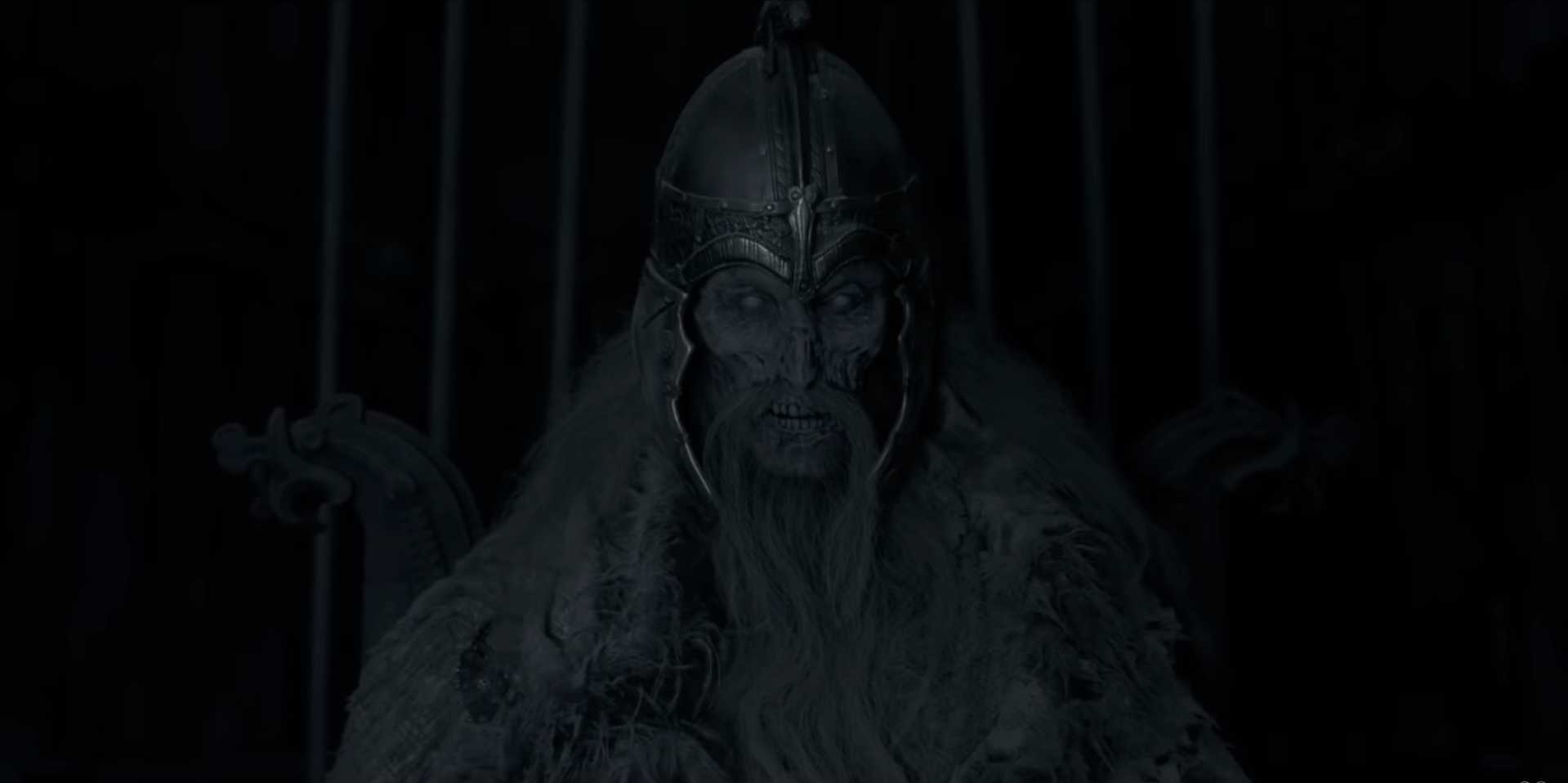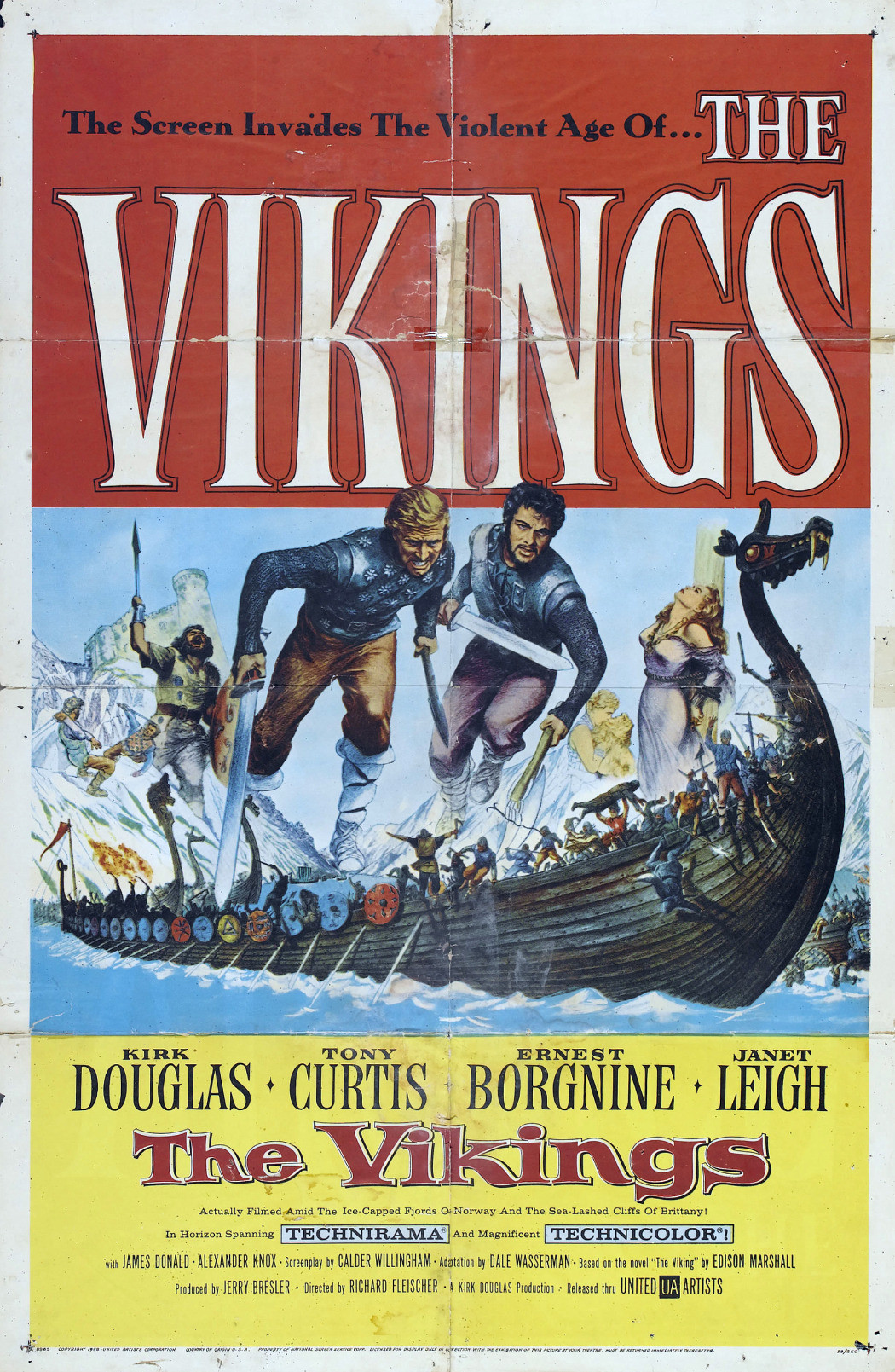The Path of the King
/This year’s John Buchan June, in which I’ve tried to focus more on Buchan’s short fiction, draws to a close with a book that is both a collection of short stories and a coherent novel and may be my favorite read this month, a sweeping set of interconnected tales spanning a thousand years: The Path of the King.
Beginning in the 9th or 10th century with the son of a Norse king, Buchan follows his descendants through multiple countries and widely varying fortunes. In the first story, the king gifts his son Biorn with a golden arm-ring. Biorn has just come of age to sail to war with his father, and in the year the story takes place famine and bad weather have placed greater than usual pressure on the outcome of their Viking raids. They strike west, avoiding Britain because of the hard-earned vigilance of its kingdoms, and settle on pillaging Frankish lands along the English Channel. When they are ambushed, Biorn is one of the only survivors, snatched out of the fight by a foreigner in his father’s war band and left in the woods. He wanders until he finally begs help at a peasant’s hut, where the story leaves him—alone, bereft, with nothing left to him but his arm-ring and an old woman’s prophecy that a great kingdom would one day arise from him.
The ring reappears in the next story on the finger of one of William the Conqueror’s more principled knights, and then on the finger of an impoverished descendant, a girl who escapes England by marrying a Bruges cloth merchant and making a fortune in commerce. One of her descendants goes on Crusade with St Louis and departs on an ill-fated mission to meet the Mongol Khan Houlagou, a mission from which only his arm—still wearing the ring—returns. One of his descendants hosts Joan of Arc, who convinces her to marry a good knight when she has doubts about the future, and one of their children becomes a Renaissance Humanist scholar and, finally, a voyager with Columbus.
A generation on, the ring returns to England with an aristocratic Huguenot refugee following the St Bartholomew’s Day Massacre, is on the hand of one of Sir Walter Raleigh’s men during one of Raleigh’s last voyages to Virginia, and on the hand of one of the regicides who signs Charles I’s death warrant at the behest of Oliver Cromwell.
This marks the beginning of a descent in the line, and the next generations we meet are skulkers and spies. One, the regicide’s grandson, works half-heartedly as a Catholic spy in England and, fearing he will be exposed by a judge who has discovered his secret, has decided to murder him when someone else does it first. Caught in an arcane plot, he is himself killed and used as manufactured evidence of a Catholic plot to invade England. His grandson, spying on the Jacobites for the Duke of Marlborough, is caught by Jacobite agents and forced to admit that, though he comes “of an ancient house” it is “somewhat decayed.” The ring is his only proof.
Spared, he vows to change his way of life, though the decay of the house seemingly continues. The next story finds one of his descendants in the wilderness of Kentucky with Daniel Boone. Like the ancestors who populate the previous stories, he is bold, intelligent, and restless. Also like them, he is ill-fated. Boone retrieves his ring and we next find it, in The Path of the King’s next-to-last story, in the possession of Nancy, a dying frontierswoman in a rickety cabin. In her final day of life, her beloved son Abe loses the ring while using it as a sinker on a fishing line and she has a vision of all the boys through her ancestry who had desired and proudly worn the ring. Whatever the ring signified, she decides, has reached its end.
The final story, told in four vignettes spanning four years of war and upheaval, follows her son Abe as President of the United States.
The first story in the first book covered this month, “The Green Wildebeest” in The Runagates Club, is introduced by Richard Hannay as a meditation on the way ancient things survive and recur in groups of people. The Path of the King is a book-length elaboration on this theme as well as many other familiar Buchan motifs, especially providence. Denied his father’s throne, Biorn and all of his descendants nevertheless keep the kingliness of their blood alive, and all of their actions and decisions—from the Conquest, the Crusades, and the Hundred Years’ War to the Reformation, English Civil War, and the American frontier—prepare the way for the man who will close the circle and fulfil the promise made to Biorn, ruling as “the last of the Kings.”
But as I’ve written before, a theme by itself is nothing. The power of a theme grows from particularity, the concrete specifics with which an author dramatizes it. The great strength of The Path of the King lies in Buchan’s vividly imagined historical vignettes. Each is populated by distinct characters in well-realized historical scenes that, despite their brevity, breathe the spirit of each story’s age strongly and authentically. It is totally absorbing. The book’s thematic connecting tissue, much like the ring itself, is always present but never the point, which gives The Path of the King both subtlety and a staggering cumulative effect.
Also crucial to this effect is the elegiac tone of much of the book. Though a few of the stories at the beginning and end span years and are long enough to be subdivided into chapters, many of them are vignettes—single historical moments. Most of them concern death. The stories, small instances in the thousand years of this family line, are moments of handing over and transition. Epiphany plays an important role, especially as the family’s fortunes rise and fall—and fall and fall—and more than one character has a deathbed vision, a glimpse of past and future. All of this, rooted as it is in the lifelike detail of the individual stories, creates a profound sense of the passage of time and the brevity of life. Ubi sunt?
I could quibble with a few things. The historical tone in places is a bit whiggish, but Buchan, ever fair-minded, does not present a straightforward progressive picture of upright Protestant modernizers triumphing over the backward. The Puritans and Parliamentarians of the Civil War and the anti-Catholic Whigs of the Restoration come off looking especially bad and Buchan presents the Jacobites, as in A Lost Lady of Old Years and Midwinter, as noble, principled, but doomed—more obsolete than evil. A bit more galling is the celebration of Lincoln as a ruling like a king. For a Southerner and an Anti-Federalist sympathizer, this is not the endorsement Buchan thinks it is.
But those are quibbles. The final story about Lincoln is of a piece with the others in its imaginative qualities, in its portraits of real people—Lincoln’s story is told from the perspectives of Edwin Stanton and William Seward, who are as vividly drawn as St Joan of Arc, Raleigh, Cromwell, Titus Oates, and Daniel Boone in others—and in its emotional strength. The scenes of Lincoln’s death, at least when Stanton is not opining on his majesty, are a fittingly moving conclusion to the story.
Perhaps my favorite stories in The Path of the King were the first two, “Hightown under Sunfell” and “The Englishman,” which is unsurprising since they’re set in my beloved Early Middle Ages. Buchan imagines the Viking Age and the defeat of Anglo-Saxon England brilliantly. “Eyes of Youth,” the Crusader’s adventure into Central Asia, and “In the Dark Land,” with Daniel Boone, offered the most adventure of the lot, with men striking into vast wildernesses full of alien dangers. The two spy stories, “The Marplot” and “The Lit Room,” offer some quality Buchan espionage in a historical vein. The most moving, for me, may have been “The Maid,” in which a young noblewoman who has just rejected an offer of marriage receives a visit from Joan of Arc and, a year later, has a vision of her on the day of her martyrdom. Buchan’s Joan is refreshingly both pious and human, an earthy farm girl in armor fired by love of God and France. And the penultimate story, “The Last Stage,” in which Nancy Hanks Lincoln is gifted a vision of her ancestors and her son’s future, has a similarly mystical power.
The Path of the King was serialized over a year from the fall of 1920 to 1921 and published in book form in 1921. It was Buchan’s first historical fiction since Salute to Adventurers before the First World War and would be followed not only by more great thrillers but by the best of his historical novels—Midwinter, Witch Wood, The Blanket of the Dark, and The Free Fishers. Elegantly constructed, rich in meaning, and beautifully imagined throughout, The Path of the King is a fitting beginning for the peak of Buchan’s literary career.
* * * * *
Thanks for joining me for another John Buchan June. I’ve greatly enjoyed the four years of this project, most especially because of the people it’s brought me into contact with. I’m looking forward to next year, though with twenty-nine books under my belt—including the overwhelming majority of Buchan’s novels—I’m already trying to plan what to read. I may have read all of his most famous books by now, but as The Path of the King, The Watcher by the Threshold, and John Burnet of Barns show, there is still plenty of wonderful reading among the more obscure Buchan.
I hope y’all have a pleasant July, and that these posts can guide you toward something good to read in the long hot evenings. As always, thanks for reading!



















